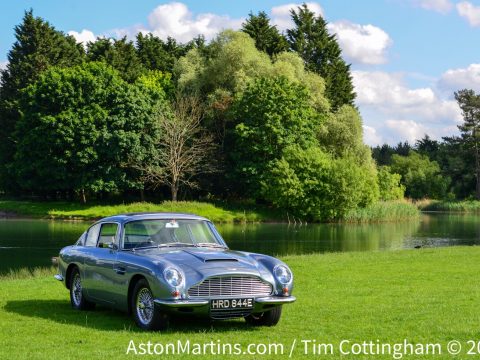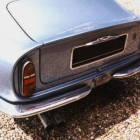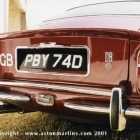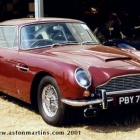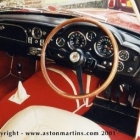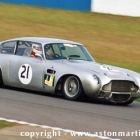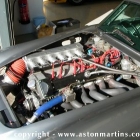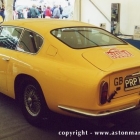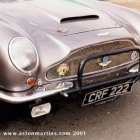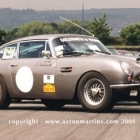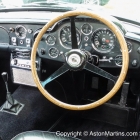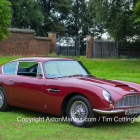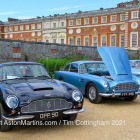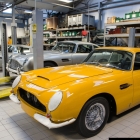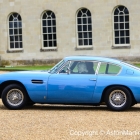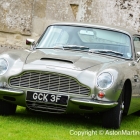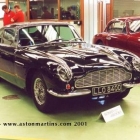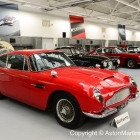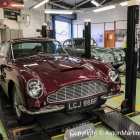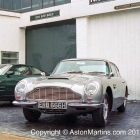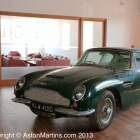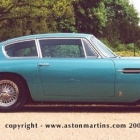The changes to the DB6 were more structural than mechanical; indeed the construction of the car no longer followed the ‘Superleggera’ principles and the badges on the bonnet were soon deleted. The engine was carried over from the DB5, triple SU’s giving a claimed 282bhp and a claimed 325bhp from the triple Weber equipped Vantage.
When production on the DB6 was superseded by the Mark 2 version in July 1969, around 1325 examples had been built making them the most numerous of the DB4/5/6 line.
Here’s the controversial swept-up tail close up and unique to the DB6. In certain circles, it is described as a Kamm tail although this description is not necessarily correct. A true Kamm tail is sharply truckated. Developed from those used on the Project cars, it was designed to reduce lift and enhance aerodynamic stability at speed. Of course, nowadays, many cars have spoilers and aerofoils, but in the late 60’s if was very rare indeed, even on other high performance cars.
A fine DB6, sold in Coys Silverstone Auction in 1999. Interestingly it features over-riders and bumpers normally seen on cars sold in the US. Whilst the DB5 featured unique single Lucas rear light lenses, those on the DB6 were ‘borrowed’ from the contemporary Triumph TR4A and TR5.
The interior of this Fiesta Red DB6 is trimmed in Magnolia Hide. I adore the matching red carpets but suspect that the car left the factory with something more sober. The ‘V’ shaped stitching pattern on the seats is unique to the DB6 Mark 1. The DB6 is a popular first Aston Martin; relatively inexpensive when compared to a DB5 yet a more thoroughly developed motorcar.
This DB6 is unique in being the only example modified for racing. The car is owned and driven by John and Gillian Goldsmith, of Goldsmith and Young, Aston Martin restorers in Wiltshire, UK. The car started out as a wreck which John decided to prepare for racing after being told that it would never be competitive against the ‘lightweight’ DB4’s. How wrong they were.
And another example of the work of Goldsmith and Young is this ‘1997 Peking to Paris Rally’ DB6 complete with ‘roo’ bars. Again the car started out as a wreck but made an excellent basis for a classic rally car. Goldsmith and Young now have there own website which you may like to visit at www.aston-gyl.com.
The yellow car (above), another DB6 with plenty of miles under it’s belt, took part in the 2000 London – Istanbul stage of the Round the World Rally which it won outright. The car also completed the 6,000 mile Trial to the Nile HERO event in 2002 without problem – a very well travelled Aston Martin.
In March 1966, the Beatle, Paul McCartney took delivery of this DB6, LLO840D. Finished in Goodwood Green with black leather upholstery and optional chrome wheels with three-ear spinners, the car eventually came onto the market at the AML/Bonhams & Brookes auction in 2001. Whilst the popular press talked the potential price to £50,000, unfortunately the car failed to sell. A year or so later, the car resurfaced again after a full restoration at AM Works Service and is still owned by AM themselves. The car retains a reel to reel tape recorder in the dashboard and it is reputed that Paul used this to record his initial lyrics and melody that became the huge Beatles hit, ‘Hey Jude’



